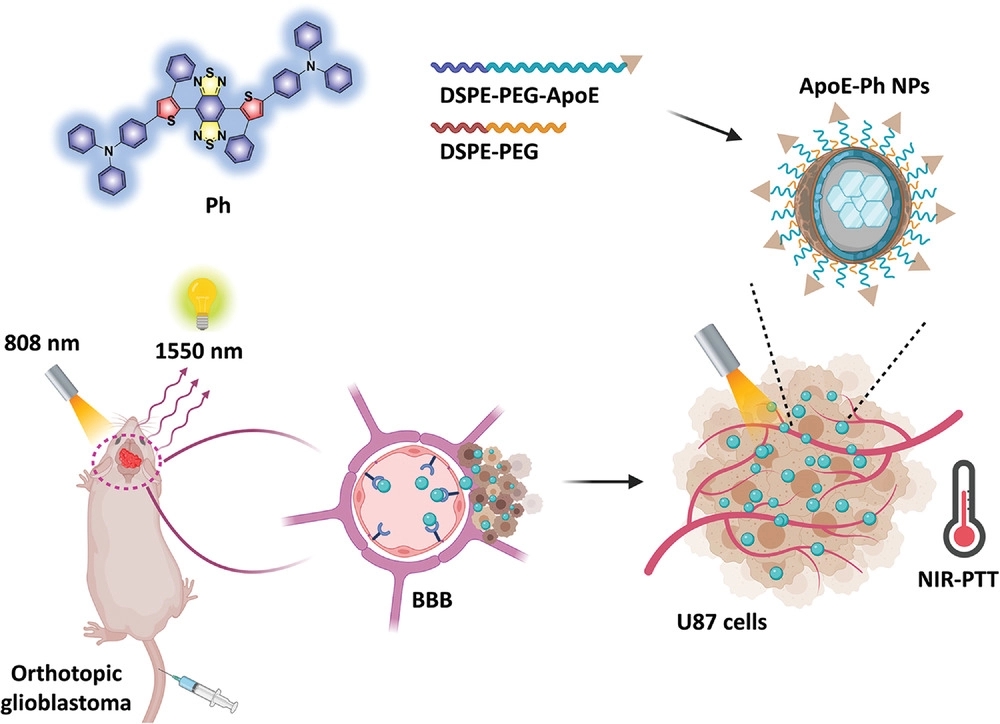Abstract
A remaining challenge in the treatment of glioblastoma multiforme (GBM) is surmounting the blood–brain barrier (BBB). Such a challenge prevents the development of efficient theranostic approaches that combine reliable diagnosis with targeted therapy. In this study, brain-targeted near-infrared IIb (NIR-IIb) aggregation-induced-emission (AIE) nanoparticles are developed via rational design, which involves twisting the planar molecular backbone with steric hindrance. The resulting nanoparticles can balance competing responsiveness demands for radiation-mediated NIR fluorescence imaging at 1550 nm and non-radiation NIR photothermal therapy (NIR-PTT). The brain-targeting peptide apolipoprotein E peptide (ApoE) is grafted onto these nanoparticles (termed as ApoE-Ph NPs) to target glioma and promote efficient BBB traversal. A long imaging wavelength 1550 nm band-pass filter is utilized to monitor the in vivo biodistribution and accumulation of the nanoparticles in a model of orthotopic glioma, which overcomes previous limitations in wavelength range and equipment. The results demonstrate that the ApoE-Ph NPs have a higher PTT efficiency and significantly enhanced survival of mice bearing orthotopic GBM with moderate irradiation (0.5 W cm−2). Collectively, the work highlights the smart design of a brain-targeted NIR-II AIE theranostic approach that opens new diagnosis and treatment options in the photonic therapy of GBM.

